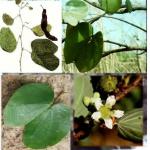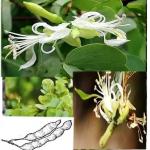Wild Eggplant, African Eggplant, Benefits, Uses
ABOUT WILD EGGPLANT
Eggplant is a vegetable plant grown for its fruit that is consumed as a vegetable.
It is not a fruit known to Europeans after colonization as potatoes or tomatoes, but it is a fruit widespread in South Asia and the Middle East almost 1000 BC. It was introduced to the Arab world as early as the ninth century, migrating to Egypt in the west and Turkey in the north. It will appear in Spain between the 8th and the 11th century. In this country, you will quickly learn to appreciate it, but elsewhere in Europe, you will be wary for a long time, probably because of its resemblance to toxic plants (mandragora, datura, belladonna).
Scientists believe his ancestor came from Africa, where there are still two similar varieties growing under the name GILO and GBOMA.
Eggplant, from the ancestral wild to today
Like all food plants, eggplant is of wild origin. The history of plant domestication, and its evolution to today’s cultivated forms, can be reconstructed from fragments of information, dispersed both in the field in their centers of origin and diversification, in various human-made documents over the ages, and in modern scientific publications. People have always used plants (such as animal products and minerals) for health care and nutrition. They are also associated with her artistic beliefs, rituals and expressions. As a result, their histories are intimately intertwined with those of the men they followed in their conquest of the world. Under the combined influence of the cultural specificities and agro-climatic conditions of the countries where they have spread over the centuries, the cultivated forms have become extraordinarily diversified on a global scale. In our day and age, the majority of the work of modeling plants to meet the needs of stakeholders in the sectors (farmers, industrialists, distributors, consumers) is in the hands of professional breeders and geneticists.
What eggplant stalls in France offer is a tiny representation of the diversity that exists, which can be discovered by traveling to Africa, particularly Asia and the Mediterranean basin, or by consulting the catalogs of certain commercial distributors. There are varietal collections, which are held in some gene banks or research institutes (such as INRA, where almost a thousand entries are kept), but they are mainly used by researchers and breeders.
Eggplant, believed to be Mediterranean, is actually a beautiful Asian, domesticated in the centuries before the Christian Era, in an area stretching from India to southwest China, from thorny wild plants with very small round or slightly oblong, green and bitter fruits.
But why and how it was domesticated, remains enigmatic?
The local population probably found an organoleptic amenity in times when the American chili was still unknown.
FORMS OF WILD EGGPLANT
Spontaneous forms of eggplant are still found today, mainly near or in villages in South-East Asia, notably in India, Burma and Thailand, whose round or slightly elongated fruits are cross-linked with several tones of green and weigh only a few grams or tens of grams. Their stems, leaves and calyxes have a very variable density of spines. The status of these plants is difficult to define for several reasons. On the one hand, their morphological diversity suggests the existence of cross-pollinations with the cultivated varieties, which is confirmed by biochemical analyzes. On the other hand, the spontaneous types a little far from the villages are not really wild because the men have always passed by one day or another where they are found. Finally, there are modern varieties in these “primitive” typologies, sometimes even F1 hybrids (the concept of “primitive” must therefore be handled with care). Spontaneous forms in Thailand have a particularly complex status as they grow almost anywhere in or near villages and people destroy some while caring for others. They call "wild" plants whose fruits do not crush under the tooth and are bitter. Since crunchy and less bitter fruit are found in equal proportions, it can be assumed that the tastes for these two types have coexisted for a long time.
Culture and Varieties of Eggplants
An eggplant weighs about 225 g. The most common eggplant variety on the stalls is purple eggplant, with white and soft flesh. The eggplants are harvested before their ripeness. Of course, these fruit vegetables would have a copper color and their flesh, filled with small black seeds, would be extremely bitter.
In France, eggplant is mainly produced in the Provence-Alpes-Côte-d’Azur, Aquitaine and Languedoc-Roussillon regions.
Varieties grown in Europe are, in principle, medium-sized fruit with an almost black and shiny epidermis. Those grown in Asia tend to be small and white or purple in color. However, white or zebra varieties appear on European stalls, among others:
Barbatane
The best-known species, purple, elongated, thick-fleshed dress.
La Berinda
Mid-length, ovoid, dark purple. Grown in southwest France from May to October.
Dobrix
Mid-long, black. It grows in the southeast from mid-April to the end of November.
The Dourga
Short elongated shape with a bright white dress. Grows in the southeast from July to October.
The Violet
Or black from Barbentane. Long, purple or black. Grown in Provence from July to October.
Giniac
Long, dark purple.
La Miléda
Half-long, cylindrical, almost black.
The Mini Eggplant
Lying down, very small, very dark purple.
The Japanese
White with small faded purple lines.
From China
Purple dress - the shape looks more like a longer and more cylindrical zucchini.
The Black Bell
Grows all year round in Italy and Sicily. Purple in color.
The Cava
Purple and oblong color, cultivated in Spain from October to the end of March.
The eggplant found in winter is imported from the West Indies, Côte d'Ivoire, Israel and Senegal.
WHY THIS DIVERSITY OF EGGPLANT SPECIES?
How did humans create the diversity that we know today in the sizes, shapes and colors of eggplant fruits, from these green berries? Natural mutations, although rare, produce variations in character expression, which may be noticeable. For example, a mutation in the gene for chlorophyll expression in the fruit’s epidermis results in the appearance of white fruits. The wild-type (allele) form of the gene yields green fruits, the mutated form yields white fruits. The character ‘distribution of chlorophylls in the epidermis of the fruit’ has two forms: the wild form with the reticulated distribution, and the mutated form with the uniform distribution.
Mutations may also involve small variations in character expression, and when selection pressure on such small differences is exerted over many generations, the change in wildness may ultimately be significant. Moreover, the mutations are coupled to genetic recombinations in the course of spontaneous hybridizations between plants. The resulting new natural variability has been exploited over many years and centuries by farmers, who choose the seed-carriers that produce each generation.
It is therefore through the combined action of these three major forces, mutations, recombinations and selection that varieties with anthocyanin (pigments covering the blue, purple, red range) with a great diversity of shades and intensities, elongated fruits, have developed and the size of the fruits has been considerably increased (the largest eggplant fruits can weigh more than one kg), by the hypertrophy of the flesh to the detriment of the proportion of seeds.
The diversity of today’s eggplant is therefore the result of the exploitation of natural variations by farmers. India and China have the greatest variety diversity, with the Mediterranean basin being the third most diverse basin for eggplant, but in a minor mode compared to the two Asian giants.
THE NUTRIENTS IN WILD EGGPLANT
Eggplant is a good source of dietary fiber, calcium, antioxidants, and vitamins, including vitamin C, vitamin K, vitamin B6, thiamin, and niacin. It has virtually no fat and few calories, sodium and cholesterol, but it has a high content of folic acid. Eggplant is also packed with minerals that are essential to a healthy body, including magnesium, phosphorus, copper and potassium. This is why it is renowned in Africa in traditional medicine.
THERAPEUTIC VALUE OF EGGPLANT
Many fruits and vegetables have excellent anticancer properties. Although it is not yet possible to define a true "diet", it has been established that some of them have virtues in prevention.
In recent years, much scientific work has been conducted on the prevention of cancer through food. More than 250 epidemiological studies show that people who consume large amounts of fruits and vegetables see this risk diminish.
In addition, eggplant contains several substances that show potential in the fight against cancer cells.
An example is Solasodine Rhamnosyl Glycosides (SRG), a type of compound found in some plants of the Solanaceae family, notably in eggplants.
Some animal studies have shown that GISs could cause cancer cell death and could also help reduce the risk of certain types of cancer.
Discover our organic remedy for prostate cancer at the following link:
https://www.afriquebio.com/boutique/maladies-chroniques/tisane-n-057-prostatex-c-cancer-de-la-prostate.html
Scientific Research on Eggplant, Wild Eggplant and African Eggplant
Although research on the subject is limited, SRGs have been particularly effective against skin cancer when applied directly to the skin.
More broadly, studies have shown that eating more fruits and vegetables, such as eggplants, can protect against certain types of cancer.
A review of about 200 studies found that eating fruits and vegetables was associated with protection against pancreatic, stomach, colorectal, bladder, cervical and breast cancer
However, more research is needed to determine how compounds found in eggplants can specifically affect cancer in humans.
Studies have shown that eggplant can be beneficial for heart health because of its ability to fight inflammation and oxidative stress, leading to healthier arteries and more balanced cholesterol levels.
Eggplants have been shown to help maintain a healthy cholesterol level because of the ability of their phytonutrients to improve blood flow and reduce plaque build-up in major arteries, particularly the aorta. Although your body needs a certain amount of cholesterol, the intake of eggplant is correlated with a balanced amount that stays in the walls of the blood vessels and an improvement in blood flow.
Studies have shown that eggplants contain strong cardioprotective compounds, noting their ability to increase left ventricular (heart) function and reduce apoptosis.
Properties and Benefits of Aubergine Sauvage
In addition to vitamins and minerals, aubergines contain a large amount of antioxidants.
Antioxidants are substances that help protect the body from damage by harmful substances known as free radicals
Studies have shown that antioxidants could help prevent many types of chronic diseases, such as heart disease and cancer
Eggplants are particularly rich in anthocyanins, pigments with antioxidant properties that cause them to be colored
In fact, several in-vitro studies have confirmed that eggplants are effective at protecting cells from damage caused by harmful free radicals
Eggplant is largely water, so it is very low in calories. Eating vegetables that contain high levels of water, fiber, and nutrients helps eliminate waste products and toxins from the digestive tract. The digestive tract and colon must be well hydrated to push stool into the intestine and out of the body.
Eating plenty of fresh, whole foods in addition to drinking enough water is crucial to the digestion system to expel toxins and excess water. Eggplant is incorporated into the GAPS diet, a diet designed to fight digestive and neurological diseases, reduce inflammation and the healing of autoimmune diseases.
Because of its high fiber and water content, eggplant is also useful for helping with weight loss. Because eggplant provides a range of essential phytonutrients, vitamins and minerals, and is very low in calories, eggplant can be a good food to incorporate into a healthy diet. The fiber in the eggplants helps you feel full, which reduces the risk of nibbling
Other properties of Aubergines
Because of their antioxidant content, some studies suggest that eggplants can help reduce the risk of heart disease. Eggplants are a good source of vitamin B1 and vitamin B6. B vitamins are water soluble, are present in many vegetables, and are necessary for fitness, brain function, metabolism, heart health, and concentration.
They are also required by the body to absorb all the nutrients from the foods you eat, trying to convert fat and carbohydrates into usable fuel for the body.
Vitamin B6 is needed to help create amino acids, which are the building blocks of proteins. Amino acids are used for many body functions, including keeping fit, fighting skin inflammation, anemia, depression, chronic fatigue, and nutritional deficiencies.
Vitamin B6 is also involved in the formation of hemoglobin (which carries oxygen to the blood), neurotransmitters (which help control your mood), and the regulation of blood sugar. Vitamin B1, another type of vitamin B found in eggplant, is used to maintain a healthy metabolism, keep the blood, heart, brain and more healthy.
A highly concentrated cream, made from eggplant, would help fight skin cancer. This type of cream contains a 10% concentration of Solosodine Rhamnosyl Glycosides, clinically proven as effective treatment for several types of skin cancer: keratosis, low cell carcinoma and squamous cell carcinoma.
Alphred AGOSSA
Porto Novo
BENIN
Add a comment








